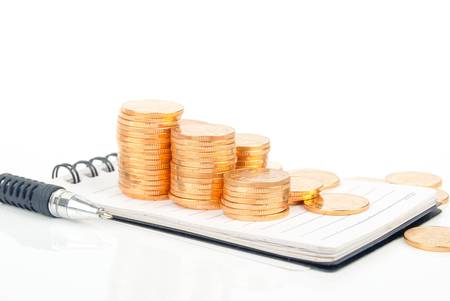1. Setting Clear Financial Goals
After becoming debt-free, it’s easy to feel a sense of relief and freedom. But that new financial freedom can quickly slip away without direction. That’s why setting clear financial goals is the first step to building habits that ensure long-term success.
Why Setting Goals Matters
Setting specific, measurable, and realistic goals gives you something to work toward. It’s like having a roadmap for your money. Instead of just hoping for the best, you know exactly where you’re headed and how to get there. This sense of purpose can help you avoid falling back into old spending habits.
Making Your Goals SMART
The SMART framework—Specific, Measurable, Achievable, Relevant, Time-bound—can be a game-changer for your financial planning. Here’s how it breaks down:
| Goal Element | What It Means | Example |
|---|---|---|
| Specific | Clearly define what you want to achieve | Save for a $5,000 emergency fund |
| Measurable | Track your progress with numbers or dates | Add $500 per month to savings |
| Achievable | Make sure it’s realistic based on your income | Cut dining out by $100/month to save more |
| Relevant | Align with your personal values and needs | Aim to buy a reliable car for family use |
| Time-bound | Set a deadline for reaching your goal | Reach $5,000 in savings within 10 months |
The Motivation Factor
Clear goals do more than keep you organized—they keep you motivated. Each time you hit a milestone (like saving another $500 or paying off a small loan), celebrate your progress! These little wins build momentum and make it easier to stay disciplined in your finances.
Tips for Setting Post-Debt Financial Goals:
- Start Small: Begin with short-term goals to build confidence.
- Write Them Down: Keep your goals visible—on your fridge, phone, or planner.
- Share With Someone: Telling a friend or family member can help keep you accountable.
- Review Regularly: Check in monthly and adjust as needed.
The journey doesn’t end when the debt is gone—it’s just getting started! By setting clear financial goals now, you lay the groundwork for lifelong financial health and security.
2. Creating and Sticking to a Budget
Why Having a Budget Matters
After becoming debt-free, it’s important to keep your finances on track so you don’t slip back into old habits. A budget helps you know where your money goes, makes sure you’re covering your needs, and lets you plan for fun things without overspending.
Steps to Build a Sustainable Budget
Track Your Expenses
The first step is knowing what you spend each month. Start by writing down every purchase or using your bank statements to review spending from the past few months. This includes everything from rent and groceries to coffee runs and streaming services.
Common Expense Categories in the U.S.
| Category | Examples |
|---|---|
| Housing | Rent, mortgage, utilities |
| Food | Groceries, dining out, snacks |
| Transportation | Gas, car payment, public transit |
| Health | Insurance, prescriptions, gym membership |
| Entertainment | Streaming, movies, hobbies |
| Savings & Investments | Emergency fund, retirement accounts (401k/IRA) |
| Personal & Miscellaneous | Clothing, gifts, travel |
Prioritize Needs Over Wants
A sustainable budget separates essentials from extras. Cover your needs—housing, food, transportation—first. Then see what’s left for wants like eating out or new gadgets. If money is tight one month, cut back on non-essentials rather than skipping bill payments.
Choose a Budgeting Method That Fits You
The best budget is one you’ll actually use. Here are some popular approaches among Americans:
| Budgeting Method | Description |
|---|---|
| 50/30/20 Rule | 50% for needs, 30% for wants, 20% for savings/debt repayment |
| Zero-Based Budgeting | Assign every dollar a job until you reach zero leftover at month’s end |
| Envelope System (Digital or Cash) | Create categories and only spend what’s allocated for each one; now available in many apps too! |
Popular Budgeting Tools and Apps in the U.S.
- Mint: Free app that links to your accounts and tracks spending automatically.
- You Need a Budget (YNAB): Focuses on giving every dollar a job; great for detailed planners.
- PocketGuard: Shows how much “safe-to-spend” money you have after bills and savings.
- EveryDollar: Simple zero-based budgeting tool inspired by Dave Ramsey’s approach.
- Clever Fox Planner (Paper): For those who prefer writing budgets by hand.
Tips for Staying Consistent With Your Budget
- Set reminders to check your budget weekly.
- If you overspend in one category, adjust next month instead of quitting altogether.
- Celebrate small wins—like hitting a savings goal or sticking to your grocery budget!
- If life changes (new job, move), update your budget right away so it stays realistic.
A good budget isn’t about restriction—it’s about making your money work for you and supporting the life you want after becoming debt-free.

3. Building an Emergency Fund
Why an Emergency Fund Matters
After becoming debt-free, one of the smartest financial habits you can develop is building an emergency fund. Life is unpredictable—medical emergencies, car repairs, or sudden job loss can happen to anyone. Having a dedicated stash of cash set aside gives you peace of mind and protects you from falling back into debt when unexpected expenses arise.
How Much Should You Save?
The right amount for your emergency fund depends on your personal situation, but financial experts in the U.S. generally recommend saving enough to cover 3 to 6 months’ worth of living expenses. This safety net helps you weather most common financial storms without resorting to credit cards or loans.
| Household Size | Monthly Expenses | Recommended Emergency Fund |
|---|---|---|
| Single Adult | $2,500 | $7,500 – $15,000 |
| Couple | $4,000 | $12,000 – $24,000 |
| Family of Four | $6,000 | $18,000 – $36,000 |
Strategies to Build Your Emergency Fund
Start Small and Stay Consistent
You don’t need to save it all at once. Begin by setting a realistic goal, like $1,000 for immediate needs. Once you hit that milestone, keep going until you reach your ideal cushion.
Automate Your Savings
Set up automatic transfers from your checking account to a separate savings account every payday. Even $50 or $100 per month adds up over time without you having to think about it.
Cut Unnecessary Expenses
Review your monthly spending and see where you can trim costs—maybe dining out less or cutting unused subscriptions. Redirect those savings straight into your emergency fund.
Boost Your Income When Possible
If possible, consider side gigs or selling unused items around the house. Any extra income can give your emergency fund a jumpstart.
Where Should You Keep Your Emergency Fund?
An emergency fund should be easy to access in a pinch but not too easy to dip into for non-emergencies. A high-yield savings account or money market account at a reputable bank is usually a good choice for American households.
4. Investing for the Future
Why Investing Matters After Becoming Debt-Free
Once you’ve paid off your debts, it’s important to look ahead and build wealth for your future. Saving is great, but investing helps your money grow faster thanks to compound interest. In the U.S., there are several accessible investment options that make it easier than ever to start—even if you’re new to investing.
Popular Investment Options in the U.S.
| Investment Option | What It Is | Main Benefits |
|---|---|---|
| 401(k) | A retirement account offered by many employers where you can contribute pre-tax income. | Employer match (free money), tax advantages, automatic payroll deductions. |
| IRA (Traditional & Roth) | An Individual Retirement Account you open yourself; Traditional IRAs use pre-tax dollars, while Roth IRAs use after-tax dollars. | Tax benefits, flexible investment choices, helps grow retirement savings even without a 401(k). |
| Index Funds | A type of mutual fund or ETF that tracks a market index like the S&P 500. | Diversification, low fees, simple way to invest in a broad range of companies. |
How to Get Started with Investing
- Start Small: Even $25 or $50 a month can make a difference over time.
- Take Advantage of Employer Plans: If your employer offers a 401(k) with matching contributions, try to contribute enough to get the full match.
- Open an IRA: You can open an IRA at most banks or investment firms. Decide if a Traditional or Roth IRA fits your needs best.
- Choose Low-Cost Index Funds: These funds keep fees low and make it easy to diversify your investments.
The Power of Long-Term Investing
The biggest advantage of investing is compounding. The earlier you start, the more time your money has to grow. For example, investing just $100 a month starting at age 25 could grow to over $200,000 by retirement age—just from letting your investments grow over time. Staying consistent and patient is key.
5. Maintaining Ongoing Financial Education
Staying debt-free isn’t just about paying off what you owe—it’s also about building strong, lasting financial habits. One of the best ways to ensure long-term success is by making ongoing financial education a part of your everyday life. Continuous learning helps you adapt to changes, spot new opportunities, and avoid the mistakes that could lead you back into debt.
Why Keep Learning?
Money management trends, interest rates, and even basic rules around credit can change over time. By keeping yourself updated through trusted sources, you’re less likely to fall for scams or outdated advice. Plus, learning more about finances can boost your confidence and help you make smarter decisions.
Practical Ways to Stay Educated
| Method | How It Helps |
|---|---|
| Reading Books | Classic personal finance books like Your Money or Your Life or The Total Money Makeover offer step-by-step strategies and timeless tips. |
| Following Trusted Experts | Follow American financial advisors such as Dave Ramsey or Suze Orman on social media for up-to-date advice and practical tips. |
| Using Community Resources | Your local library often hosts free workshops, while community centers may offer classes on budgeting or investing. |
| Joining Online Forums | Websites like Reddit’s r/personalfinance provide real-life stories and peer support from others in similar situations. |
| Listening to Podcasts | Financial podcasts break down complicated topics into easy-to-understand episodes—perfect for busy schedules. |
Where to Start in Your Community
In the U.S., many cities have nonprofit organizations focused on financial literacy. Check with your local United Way chapter or search for “financial literacy workshops” in your area. Many banks also offer free seminars both online and in person.
Quick Tips to Make Learning a Habit
- Set aside 15 minutes a week to read a financial article or listen to a podcast episode.
- Create a list of questions about money that you want answered, and research one each month.
- Connect with friends or family who are also interested in improving their finances—share resources and tips together.
By making continuous learning part of your routine, you’ll not only protect yourself from falling back into debt but also unlock new ways to grow your wealth and meet your goals.

